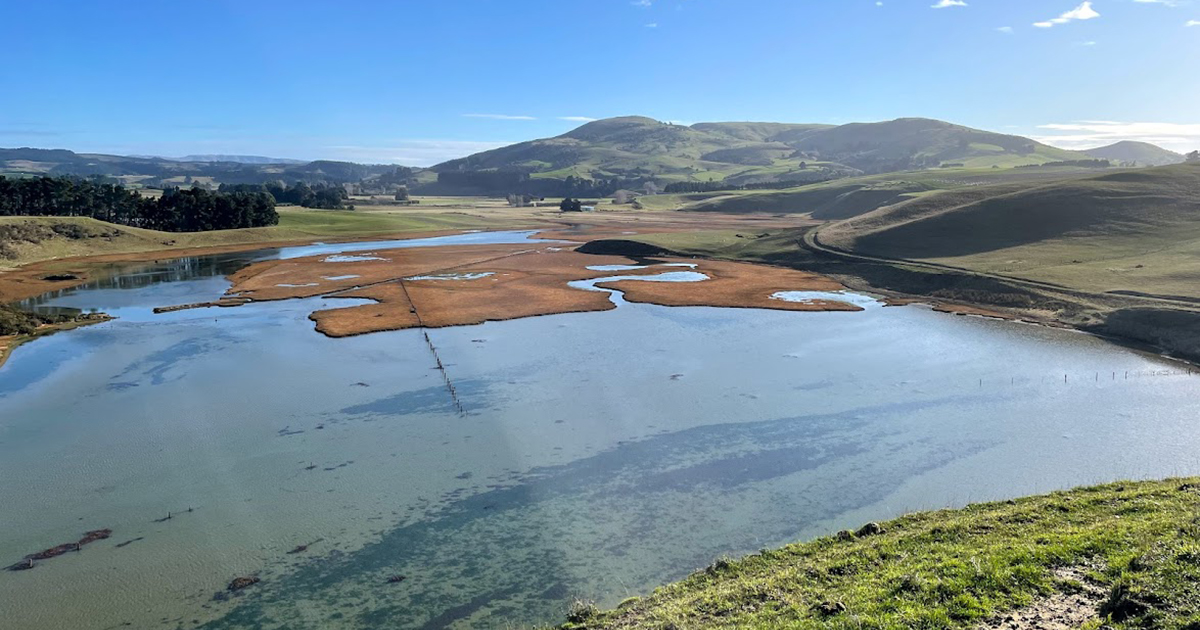$4,004,500 from the Ministry for the Environment’s Jobs for Nature will make up the bulk of the $5,290,500 project cost to identify, plan and implement actions to restore the catchment north of Waikouaiti.
Manager Environmental Implementation Andrea Howard said there were signs the health of the catchment had degraded.
“Te Hakapupu is showing signs of excess sedimentation and nutrients, which impacts on ecosystem habitat and health, cultural values, as well as reducing recreation and amenity values. These signs include areas of dense algal mats, anoxic water conditions, and muddy sediment around the estuary”.
“Changing land use in the area over time has contributed to sediment and nutrients entering the waterways. Erosion which is associated with land clearance and weather events has also exacerbated sediment issues in the catchment.”
ORC, and its project partners, will take a number of steps over the next four years to set the restoration of Te Hakapupu in motion, Ms Howard said.
“Over the next year, we will gather baseline data on the catchment to better understand the sediment, fish habitat and water quality issues, as well as creating an overarching Catchment Management Plan, to guide activities that will improve water quality. Throughout the course of the project, we’ll be working actively with the forestry sector to ensure that best practice forestry harvesting is undertaken to reduce sediment loss. We will also work with landowners to create and implement Sediment Mitigation Plans.”
“Finally, by June 2025, we will have implemented on-the-ground mitigation activities in line with the catchment plan. This is expected to include installing 60km of fencing, planting over 100,000 native trees, restoring fish passage in the catchment, and a range of other potential remediation actions – like sediment traps, bank stabilisation, wetland restoration, and riparian buffers in forestry areas.”
Ms Howard said the project would progress in partnership with local rūnaka and with collaboration from the East Otago Catchment group and wider community.
“We are very grateful to the Ministry for the Environment and the Jobs for Nature programme for the support, and we’re looking forward to the next four years of practical, measurable environmental enhancements to restore Te Hakapupu,” she said.
Click here to see the funding announcement from Minister for the Environment Hon David Parker.

